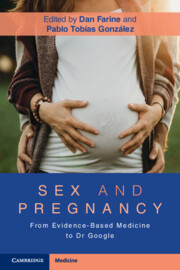Section 2 - Specific Issues
Published online by Cambridge University Press: 09 November 2022
- Type
- Chapter
- Information
- Sex and PregnancyFrom Evidence-Based Medicine to Dr Google, pp. 55 - 204Publisher: Cambridge University PressPrint publication year: 2022

